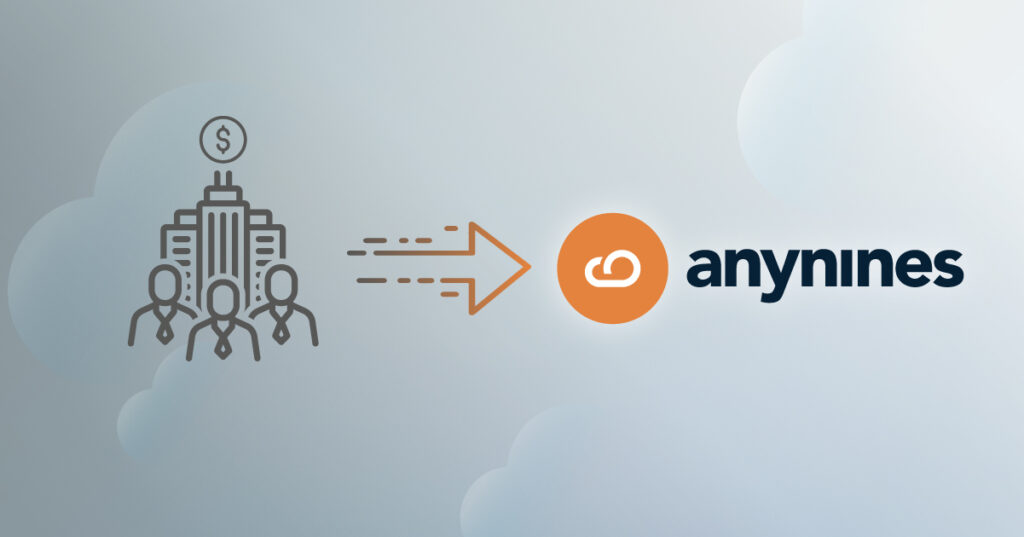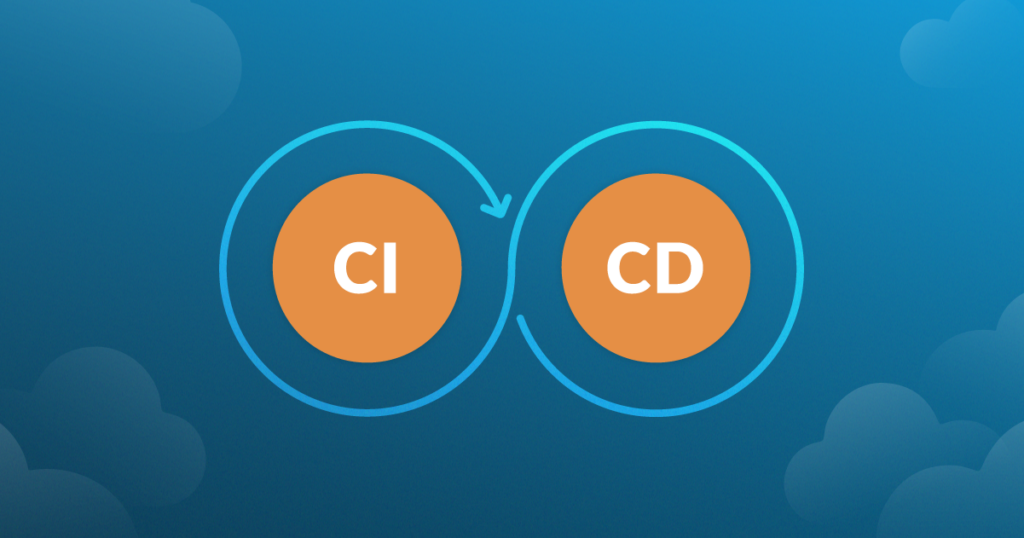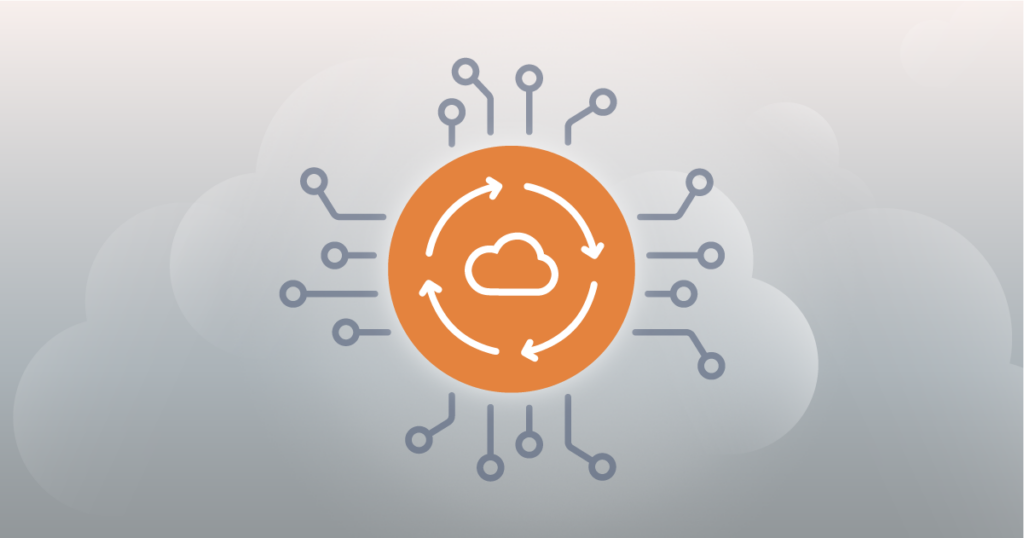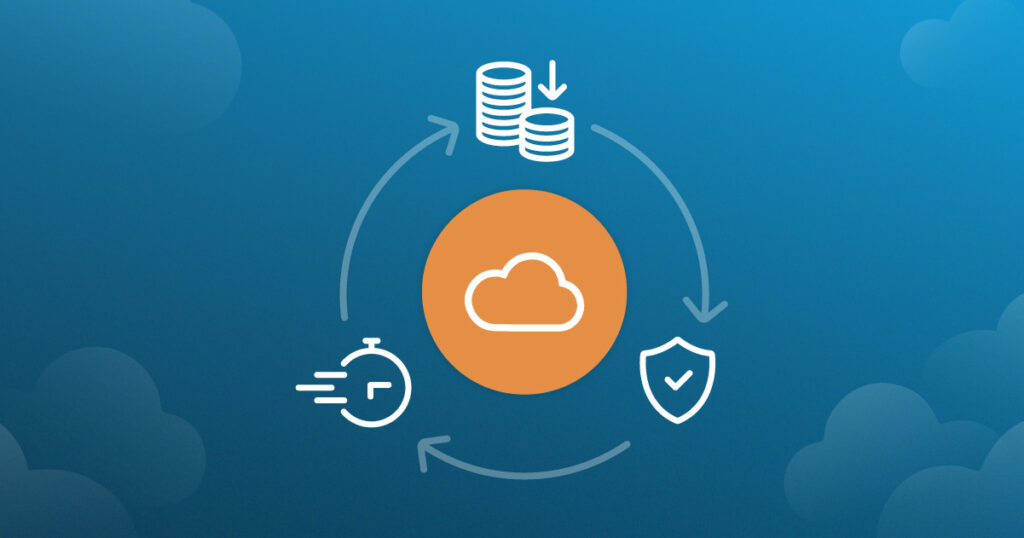The concept of cloud-native applications is a game-changer in the software development landscape. Cloud-native app development has a strong focus on scalability, resilience, and rapid iteration, which is why it has become such a strong modern digital innovation. Reaching this concept’s full potential requires a deep, solid understanding of the underlying technologies and best practices.
This comprehensive guide aims to simplify the complexities of cloud-native app development and shed light on the pivotal role that VMs (virtual machines) play in this ecosystem. Whether you’re a seasoned developer or just beginning on your cloud-native journey, this guide will provide you with the knowledge and tools needed to optimize your development process and maximize the benefits of cloud-native architecture through the use of VMs.
What is Cloud-Native App Development?
First things first, cloud-native app development refers to the approach of designing, constructing, and operating applications that exploit the advantages of the cloud computing delivery model. By adopting a cloud-native approach, organizations can achieve faster development times, and more efficient use of resources, as well as improved scalability and resilience of their applications. Automation and the use of lightweight, portable, and scalable technologies are at the heart of the cloud-native model. These characteristics enable businesses that utilize it to be better able to innovate and adapt more quickly.
Cloud-Native Application Elements
Here’s a breakdown of the core elements of cloud-native applications:
- Microservices: These are small, independent components that allow for easy scaling and continuous improvement of applications. Microservices architecture replaces the traditional monolithic approach to app development, facilitating easier updates and maintenance.
- Containers: Containers encapsulate microservices, making it possible to run them in any environment. This encapsulation ensures consistency across development, testing, and production environments, reduces conflicts between running applications, and makes scaling more efficient.
- DevOps: This is a set of practices that combines software development and IT operations, aiming to shorten the development lifecycle and provide continuous delivery with high software quality. DevOps is integral to cloud-native development, enhancing collaboration and productivity. This happens through the automation of infrastructure and workflows, as well as through the continuous measurement of application performance.
- Continuous Integration and Continuous Delivery (CI/CD): These practices enable developers to integrate code into a shared repository frequently and to release new versions of applications quickly and safely, ensuring that software can be reliably released at any time.
- Serverless Computing: This cloud computing execution model abstracts the server layer from application development. The cloud provider dynamically manages the allocation of machine resources, allowing developers to focus on writing and deploying code without worrying about the underlying infrastructure.
Fundamental Concepts of Virtualization
Virtualization is a transformative technology that allows for the more efficient use of physical computer hardware by creating an abstraction layer on top of it, enabling a single physical machine to run multiple virtual environments. These virtual environments, or VMs, simulate a physical computer, allowing for multiple operating systems and applications to run concurrently on a single hardware platform. This technology is foundational to cloud computing, as it facilitates the pooling and sharing of resources across a network, improving hardware utilization and flexibility.
A key component of virtualization is the hypervisor, a software layer that manages and allocates physical resources among the VMs. There are two main types of hypervisors: The first type are bare-metal hypervisors, which run directly on the hardware, while the second type are hosted hypervisors, which operate within a conventional operating system. Bare-metal hypervisors are known for better performance and are commonly used in enterprise environments, while hosted hypervisors are suited for end-user computing.
Advantages of Using VMs in Cloud-Native App Development
In the realm of cloud-native application development, the choice of infrastructure plays a pivotal role in shaping the success and efficiency of your projects. VMs have long been a cornerstone in cloud computing environments, offering a myriad of benefits that align seamlessly with the principles of cloud-native development. Let’s explore some of the most important advantages in detail.
Resource Utilization
- Flexibility in Deployment: VMs offer unmatched deployment flexibility, enabling deployment almost anywhere, regardless of the host’s operating system or configuration. This cross-platform compatibility extends to running different operating systems within the same hardware environment, enhancing the development and testing landscape by accommodating diverse software requirements.
- Security and Isolation: Security is a paramount concern in application development, and VMs provide superior isolation and security compared to other virtualization technologies like containers. By not sharing kernels or other essential system resources, VMs ensure that applications are insulated from each other and from the host system, mitigating potential security risks.
- Efficient Resource Utilization: Through server virtualization, a single physical server can be segmented into multiple independent virtual servers, each capable of running its own tasks and applications. This not only maximizes server performance and workload capacity but also significantly reduces operating and managing costs by lowering the physical server complexity.
- Optimization of the Network: Network virtualization replicates physical network functionality in a software-defined environment, allowing for more efficient management and operation of network resources. By virtualizing network components like switches and routers, organizations can achieve greater operational capabilities at a lower cost, enhancing the overall efficiency of network management.
- Cost Savings and Productivity in DevOps: Virtualization plays a crucial role in DevOps by allowing for more agile, flexible, and scalable development processes. By enabling faster workload and environment setups, virtualization contributes to significant cost savings across the software development lifecycle (SDLC), primarily in terms of maintenance and testing, thereby making teams more productive.
To effectively utilize resources and ensure optimal operation of VMs, it’s crucial to engage in comprehensive monitoring, employ dynamic scaling, and maintain appropriate VM sizing. This entails deploying monitoring tools to track VM performance across various metrics such as CPU, memory, and storage utilization, thereby identifying potential for optimization. Implementing auto-scaling mechanisms allows for the automatic adjustment of resources in response to fluctuating demand, ensuring that resources are neither underutilized nor overwhelmed. Regular assessment of VM sizes is necessary to confirm their suitability for the workload they support, with adjustments made as needed to prevent both overprovisioning and underutilization.
Scalability
- Rapid Deployment and Simplification of Complex Applications: VMs can dramatically simplify the deployment process of complex, scalable cloud-native applications. By encapsulating an entire operational environment, VMs allow developers to deploy pre-configured systems quickly, significantly reducing the time and complexity involved in setting up scalable cloud-native applications.
- Enhanced Disaster Recovery and High Availability Strategies: VMs facilitate more efficient disaster recovery and high availability configurations. The ability to snapshot and clone VMs enables rapid recovery from failures and ensures high availability of services, crucial for maintaining the scalability and reliability of cloud-native applications during peak loads or in the event of component failure.
- Workload Portability Across Cloud Environments: VMs enhance the portability of workloads, allowing organizations to migrate applications across different cloud environments without the need for significant modifications. This portability is essential for scaling applications across clouds to meet global demand or to leverage cost efficiencies.
- Support for Legacy Systems in a Cloud-Native Architecture: Integrating legacy applications into a cloud-native architecture can be challenging. VMs provide a pathway for these legacy systems to operate within modern cloud environments, ensuring that even non-cloud-native components can scale effectively alongside newer, microservices-based parts of the application.
- Automated Management and Maintenance: The use of VMs in cloud environments often comes with tools for automated management, monitoring, and maintenance. These tools enable efficient scaling by automatically handling tasks such as performance tuning, security patching, and network configurations, thus supporting the scalable infrastructure’s operational demands without manual intervention.
Achieving scalability with VMs for cloud-native applications involves several strategic practices. Start by leveraging autoscaling features to dynamically adjust VM resources according to demand, ensuring efficient handling of traffic peaks. Complement this with load balancing to distribute traffic evenly across VM instances, enhancing application responsiveness. Incorporate containerization within VMs to combine the portability of containers with VM robustness, managed effectively by orchestration tools like Kubernetes. Regular performance optimization of VM instances is crucial for maximizing resource efficiency. Adopting a microservices architecture allows for the independent deployment and scaling of application components, aligning well with scalability and resilience objectives. Lastly, a robust disaster recovery strategy, including VM snapshotting and cross-region replication, is essential to maintain scalability under adverse conditions, ensuring minimal downtime and consistent user experience.
Flexibility
- Portability: Cloud-native technologies like containers ensure applications and their dependencies can run consistently across different environments, from development to production, without the need for adjustments or configuration changes. This portability facilitates seamless deployments across various cloud platforms, thereby reducing the risk of vendor lock-in and allowing businesses the flexibility to switch providers as necessary.
- Flexible Resource Provisioning: VMs offer on-demand access to computing resources, which can be scaled up or down based on business needs. This flexibility allows businesses to adjust their computing resources quickly to meet changing demands without the need for additional hardware investments.
- Customized Operating Environments: Organizations can choose specific operating systems, programming languages, and application environments that best suit their project requirements when using VMs. This level of customization ensures that development teams can work in optimal conditions for their specific applications.
- Support for Legacy Applications: VMs are particularly useful for housing traditional, legacy, and monolithic workloads. They allow these older applications to run in a cloud environment without requiring significant re-architecting. Organizations can therefore adopt cloud technologies while still leveraging their existing software investments. This results in a smoother transition to modern IT practices.
- Ease of Management: The management of cloud-native applications is streamlined through automation and orchestration tools, which are an integral part of VM and cloud environments. This facilitates easier deployment, scaling, and monitoring of applications, enhancing operational efficiency and agility.
To effectively increase flexibility in cloud computing, it’s recommended to adopt an integrated approach, combining Infrastructure as Code (IaC) and multi-cloud strategies. This approach involves leveraging IaC tools like Terraform or AWS CloudFormation for automating the deployment, configuration, and management of cloud-based VMs and services. IaC not only enhances operational efficiency and consistency by eliminating manual processes but also facilitates the easy replication of cloud environments, thereby streamlining development and testing workflows. Complementing IaC, a multi-cloud strategy emphasizes the importance of avoiding reliance on a single cloud provider. By designing your cloud architecture to be portable across different cloud environments, you can take advantage of the unique features, services, and pricing models each provider offers. This not only ensures greater flexibility and choice for your organization but also supports different use cases and customer demands, leveraging rapid innovation by cloud providers to enhance your services.
Isolation
- Separate Operating Systems: Containers, while offering process and file system isolation, ultimately share the host system’s kernel. This shared kernel means that containers can’t provide the same level of isolation from each other or the host system as VMs do. VMs, on the other hand, run their own complete OS, granting them stronger isolation and making them suitable for scenarios requiring higher security or the operation of diverse OS environments on the same hardware.
- Isolation for Application Dependencies: VM-based isolation enables cloud-native applications to encapsulate their dependencies within individual VM instances. Each VM can run its own set of libraries, frameworks, and runtime environments, ensuring that changes or updates to one component do not affect others. This isolation minimizes dependency conflicts and compatibility issues, simplifying application deployment and management in complex, multi-component environments.
- Fault Isolation and Resilience: VM-level isolation provides a strong fault boundary for cloud-native applications, isolating failures to individual VM instances. In the event of a software or hardware failure within one VM, other VMs and application components remain unaffected, maintaining overall system stability and resilience. This isolation strategy enhances the reliability and availability of cloud-native applications, minimizing downtime and service disruptions.
To ensure isolation and enhance the security of your applications, you should implement a microservices architecture to break down applications into smaller, independent services that can run in separate VMs. This setup not only facilitates easier management, updating, and scaling of individual components but also significantly improves isolation. Enhance this architecture with robust security measures by configuring security groups and network Access Control Lists (ACLs) to control inbound and outbound traffic to VMs, ensuring only authorized traffic can access your applications. Additionally, maintain a strong security posture by regularly updating and patching VMs, automating this process to protect against known vulnerabilities. This approach combines architectural, network, and maintenance strategies to create a secure and isolated environment for your applications.
Wrapping Up
Throughout this comprehensive guide, we’ve explored the cloud-native app development landscape and highlighted the crucial role of virtual machines within. From defining the core elements of cloud-native architecture to exploring the fundamental concepts of virtualization, we’ve laid a solid foundation for understanding the symbiotic relationship between these technologies.
We discussed the advantages of using VMs in cloud-native app development and best practices designed to optimize development workflows and enhance operational efficiency.








